- News
- Reviews
- Bikes
- Components
- Bar tape & grips
- Bottom brackets
- Brake & gear cables
- Brake & STI levers
- Brake pads & spares
- Brakes
- Cassettes & freewheels
- Chains
- Chainsets & chainrings
- Derailleurs - front
- Derailleurs - rear
- Forks
- Gear levers & shifters
- Groupsets
- Handlebars & extensions
- Headsets
- Hubs
- Inner tubes
- Pedals
- Quick releases & skewers
- Saddles
- Seatposts
- Stems
- Wheels
- Tyres
- Tubeless valves
- Accessories
- Accessories - misc
- Computer mounts
- Bags
- Bar ends
- Bike bags & cases
- Bottle cages
- Bottles
- Cameras
- Car racks
- Child seats
- Computers
- Glasses
- GPS units
- Helmets
- Lights - front
- Lights - rear
- Lights - sets
- Locks
- Mirrors
- Mudguards
- Racks
- Pumps & CO2 inflators
- Puncture kits
- Reflectives
- Smart watches
- Stands and racks
- Trailers
- Clothing
- Health, fitness and nutrition
- Tools and workshop
- Miscellaneous
- Buyers Guides
- Features
- Forum
- Recommends
- Podcast
review
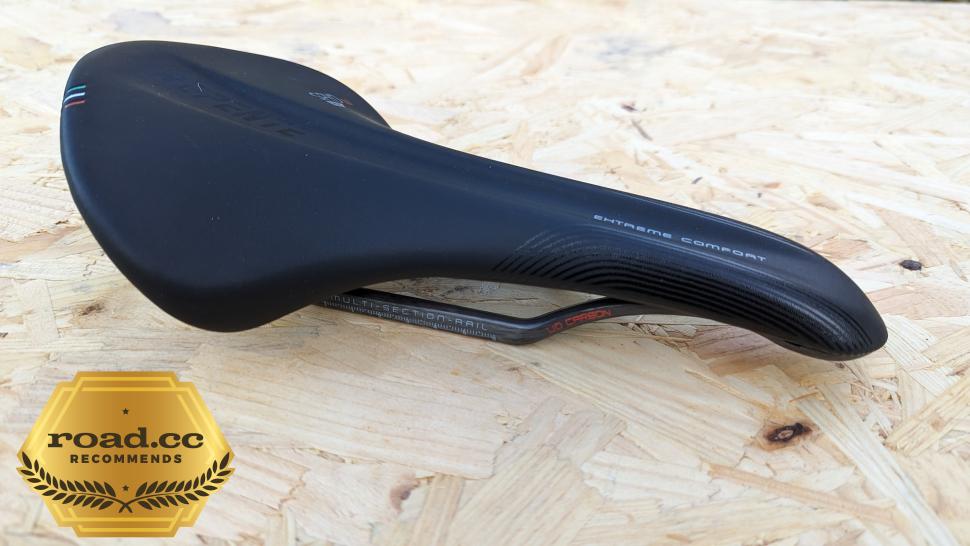 Repente Spyd 3.0
Repente Spyd 3.0£164.83
VERDICT:
Reasonably priced carbon rail saddle that provides outstanding comfort on even the longest rides
Extremely comfortable
Two width options
Competitively priced
Replaceable parts
Cover can discolour when ridden in muddy and gritty conditions
Weight:
174g
Contact:

This product has been selected to feature in road.cc recommends. That means it's not just scored well, but we think it stands out as special. Go to road.cc recommends
At road.cc every product is thoroughly tested for as long as it takes to get a proper insight into how well it works. Our reviewers are experienced cyclists that we trust to be objective. While we strive to ensure that opinions expressed are backed up by facts, reviews are by their nature an informed opinion, not a definitive verdict. We don't intentionally try to break anything (except locks) but we do try to look for weak points in any design. The overall score is not just an average of the other scores: it reflects both a product's function and value – with value determined by how a product compares with items of similar spec, quality, and price.
What the road.cc scores meanGood scores are more common than bad, because fortunately good products are more common than bad.
- Exceptional
- Excellent
- Very Good
- Good
- Quite good
- Average
- Not so good
- Poor
- Bad
- Appalling
The Repente Spyd 3.0 is a high-performance saddle that is suitable for both on and off-road riding. While it shares elements with other saddles, such as a cut-away central channel to relieve pressure, carbon rails and a carbon-reinforced shell material to save weight, what sets it apart is the RLS system – which might help explain why it has proven to be such a comfortable saddle for even the longest of rides.
For more options, check out our guide to the best bike saddles.
> Buy now: Repente Spyd 3.0 for £154.99 from Amazon
Repente provides a range of saddles with various shapes to cater to the needs of different riders.
The Spyd 3.0 is marketed as a 'Close Fit' saddle, designed to reduce pressure on the ischial bones (up to 40% less, claims Repente). It certainly has an unusual shape, with an almost vertical edge where it widens for the 'sitting' area, and really seems to reduce rubbing and abrasion on the legs while pedalling – it's quite unlike other saddles I've used, which have a more curved design.
It also features a central channel that runs the length of the saddle to relieve perineal pressure, and the same location on the saddle base has a section removed too.
The Spyd 3.0 comes in two widths, 132mm and 142mm, measured at the widest point. Repente claims a weight of 165g (+/- 5%) for the narrower 132mm version; our 142mm saddle was 175g. This puts it in the same weight range as many other saddles – in fact, if you're looking for lighter we've only reviewed a couple that will save you any more than 25g, the Cadex Amp and SQlab's 612 Ergowave R Carbon, though neither will save you money.
There is no rider weight limit for the Spyd 3.0, and it is suitable for both male and female riders, for both on and off-road use (Repente rates it 4/4 for mountain biking, and 3/4 for road).
The 7x9mm T700 UD carbon rails are secured to the base employing the Repente Locking System – the RLS I referred to at the start of the review. Rather than being glued into the saddle base or moulded as a single piece of carbon, the rails, base and cover are all screwed together. (Repente has a video you can watch on its site, showing how it works.)
The system is unique to Repente and has several benefits, most notably the possibility of replacing just the top, either in the event of damage or you just wish to use a differently shaped top section, or the base, if you want to go full carbon perhaps.
There could also be some extra flex within the system, as the sections are not bonded together, which is potentially another reason I've found it so comfortable.
The carbon rails provide a good amount of fore/aft movement, and compared with other saddles I own or have ridden, the Spyd 3.0 allows a more forward-seated position.
In use
Saddle comfort is subjective, of course – what works for me might not work for you, and vice versa – but I've ridden on the Spyd 3.0 for hundreds of kilometres, on and off-road, and have found it consistently excellent in this regard.
The broad base, tapered front, and unusual shaping are all noticeable while riding. There is a slight lip at the rear, and I found the overall form very comfortable, allowing me to remain seated without moving forwards or backwards at all. And while the central channel isn't completely cut out, you can still feel the height reduction.
The padding is what Repente calls 'Superlight EVA'; it isn't especially noticeable – I'd say the comfort comes more from the flex of the PA12 base. Rather than a full-carbon base, as used in Repente's top-end saddles, the Spyd 3.0's is made with resin reinforced with long carbon fibres (LCF) which Repente says form a sort of weave that increases the strength of the structure.
The company claims the saddle is suitable for both on and off-road riding, and will have tested the strength of the base and saddle rails, but one area where durability and wear seem questionable is the water-based microfibre covering, which is showing a small amount of discolouration. It's likely to be down to heavy use in typical autumn and winter conditions, with muddy shorts possibly causing the wear.
Some saddles designed for off-road use have a separate wear-resistant material – the WTB Silverado, for example.
There is no sign of the cover fraying, or holes forming, only some discolouring – and it's not the only saddle I've seen with this problem – but here, if the cover does ever wear out completely or gets ripped in any way, such as in a crash, the Repente Locking System means you can replace it separately from the carbon rails and base.
Value
The Spyd 3.0 costs £164.83, which is cheaper than some carbon-railed saddles that have scored well, such as the Bontrager Aeolus Pro that Rebecca thought was very good, and the SQlab 612 Ergowave I mentioned earlier, both of which are priced at £199.99.
The Fizik Vento Antares R3 is slightly cheaper at £149.99, but its length and shape didn't really work for our reviewer Ed. It uses alloy Kium rails and is quite a bit heavier at 205g.
Saddles with full-carbon shells and carbon rails are often a lot more; the Prologo Dimension Nack CPC 143, for example, which Tom reviewed last year, is £226.99 at rrp (though currently discounted).
Conclusion
As I said above, saddle comfort is subjective, but I've used the Spyd 3.0 for long rides of over 150km, with a total distance nearing 3000km, and the level of comfort it provides has allowed me to complete much of these distances seated, without any soreness.
It's a lightweight saddle that has delivered genuine all-day comfort at a very reasonable price, quickly becoming my go-to brand and model for both road and off-road riding.
> Buy now: Repente Spyd 3.0 for £154.99 from Amazon
Verdict
Reasonably priced carbon rail saddle that provides outstanding comfort on even the longest rides
road.cc test report
Make and model: Repente Spyd 3.0
Size tested: 142mm
Tell us what the product is for and who it's aimed at. What do the manufacturers say about it? How does that compare to your own feelings about it?
Repente says:
A wider anatomical channel to relieve the perineal pressure
The channel designed to relieve perineal pressure is made into an iconic element of this new version: wider and running over the whole length of the saddle. A design that also meets the specific needs of women users.
Improved comfort is also achieved thanks to the thicker padding.
In Spyd 3.0 the "Close fit" shaping of the rear support, typical of Repente saddles, has been maintained. Just like another member of the family, Prime, this saddle has sides shaped to allow maximum freedom for the hip joint, in order to ensure improved performance and a more stable position while pedalling (ERGO SHAPE).
The graphic pattern on the front, in glossy paint, also makes leg movement smoother by reducing any inner thigh chafing.
The structure of Spyd 3.0 is in carbon fibre-reinforced PA12 (LCF technology), the rail is in UD T700 carbon fibre, the padding in ultralight Eva, and the cover in water-based microfibre with anti-slip function. The saddle is equipped with the RLS system for replacing the pad in case of damage.
Spyd 3.0 is a rigid and lightweight saddle, characterised by an even seating surface, particularly suitable for mtb and gravel cycling.
Tell us some more about the technical aspects of the product?
Repents lists:
Widths available: 132mm & 142mm
COATING: Water-based microfiber
PADDING: Superlight EVA
PADDING: SUPPORT PA12 Carbon Reinforced
SUPPORT STRUCTURE: PA12 Long Carbon Fiber (LCF)
RAIL: UD Carbon Fiber T700 Ø 7x9 mm
DIMENSIONS: 275 mm x 142 mm / 275 x 132mm
WEIGHT: (+/- 5%) 165 g (5,82 oz)
GRAPHICS: Black
Rate the product for quality of construction:
9/10
The Repente Locking System (RLS), which separates the UD carbon rails and PA12 carbon-reinforced base from the top padded section, is innovative and hasn't caused any problems.
Rate the product for performance:
10/10
Superb comfort, even for the longest all-day rides.
Rate the product for durability:
7/10
Used off-road and in wet/muddy conditions the cover has started to wear and discolour slightly, though the RLS design does mean you can replace just the cover without having to replace the rails and base.
Rate the product for weight (if applicable)
7/10
There are lighter options, and it isn't going to be the saddle of choice for the weight-obsessed, but it compares well with other carbon rail designs.
Rate the product for comfort (if applicable)
10/10
Exceptional comfort, on the longest of rides and used on and off-road.
Rate the product for value:
7/10
Compared to other saddles that share a similar construction with carbon rails, the price of around £160 is good; many are closer to or above £200.
Tell us how the product performed overall when used for its designed purpose
It was extremely comfortable, enabling me to complete all-day rides without any problem.
Tell us what you particularly liked about the product
The level of comfort it offers, allowing me to stay seated for longer than many other saddles I have used.
Tell us what you particularly disliked about the product
There are signs of the microfibre cover discolouring after use on a gravel bike in very wet and muddy autumn/winter conditions.
How does the price compare to that of similar products in the market, including ones recently tested on road.cc?
The Bontrager Aeolus Pro shares a comparable carbon-reinforced and carbon-railed construction, and costs £199.99.
Saddles with full-carbon shells and carbon rails are often a lot more, such as the Prologo Dimension Nack CPC 143 at £226.99.
Did you enjoy using the product? Yes
Would you consider buying the product? Yes. I am a real fan of the shape and comfort it provides.
Would you recommend the product to a friend? Definitely, and there are two widths available for anyone who would prefer a narrower saddle.
Use this box to explain your overall score
If your main desire when choosing a saddle is ultimate comfort, give the Spyd 3.0 a go – saddle comfort is subjective, for me it's superb. Used on the longest all-day rides, in all conditions, and both on and off road, at no point has it ever caused discomfort or soreness. The weight is competitive, and it's cheaper than lots of similar carbon-based saddles available. It's excellent.
About the tester
Age: 39
I usually ride: My best bike is: Cannondale SystemSix
I've been riding for: Over 20 years I ride: Every day I would class myself as: Expert
I regularly do the following types of riding: road racing, cyclo cross, commuting, sportives, general fitness riding, fixed/singlespeed, mtb, Lots of gravel style riding
Matt is an endurance nut who loves big rides and big events. He's a former full-time racer and 24hr event specialist, but now is also happy riding on or off-road and loves long adventures and audax events.
Latest Comments
- quiff 27 min ago
Less academic, but memorably encapsulated recently by Saoirse Ronan
- quiff 38 min 26 sec ago
Fascinating - I have always thought Hersheys has a whiff of vomit about it!
- Global Nomad 39 min 25 sec ago
good to see you're testing the farsports wheels - hope to see road.cc continue to expand the range of brands it considers. These or the shallower...
- chrisonabike 41 min 57 sec ago
Duly triggered! (At least "it's comedy!" though)....
- quiff 43 min 23 sec ago
Agreed, though those in thrall to the car lease would probably think the same of my coffee expenditure...
- chrisonabike 45 min 5 sec ago
Frustratingly we could probably avoid (most of) this if only one or two fundamental things were the other way around e.g. "you can only drive on...
- chrisotherwise 1 hour 12 min ago
Sadly very normal. And the sand contains loads of evil little shards of flint.
- David9694 4 hours 21 min ago
Random driver account: "cyclists should be made to wear hi viz like workers do on a building site"....
- quiff 4 hours 34 min ago
"The algorithm" served me an older JV video last week which I now can't get out of my head....
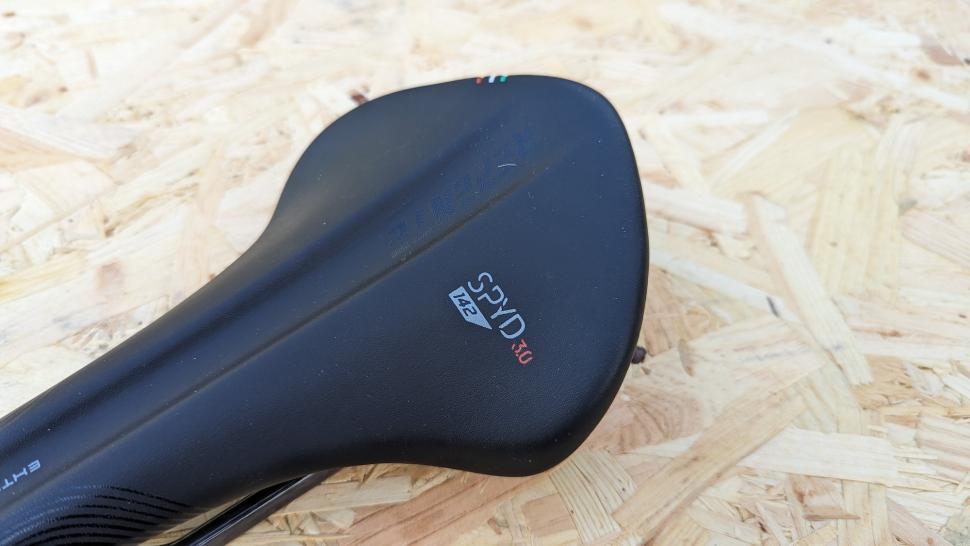
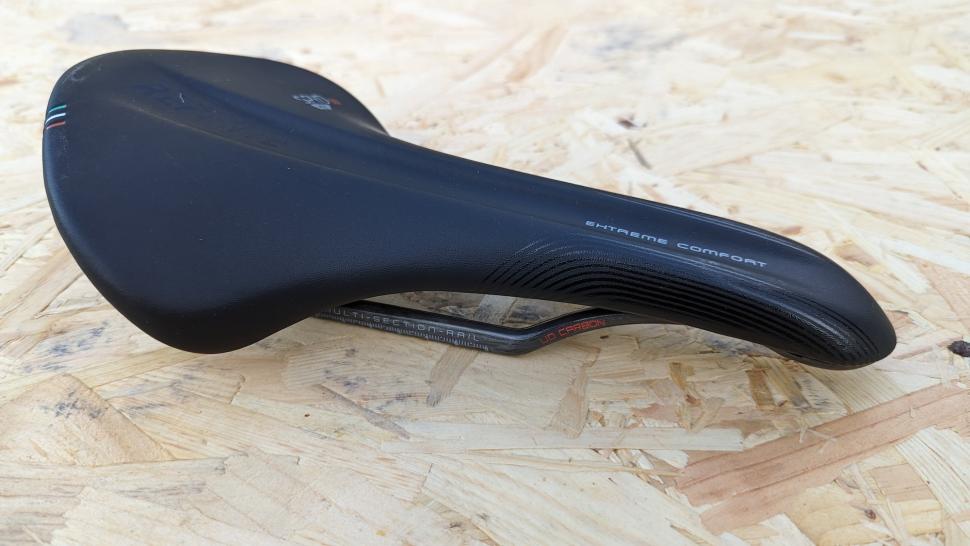
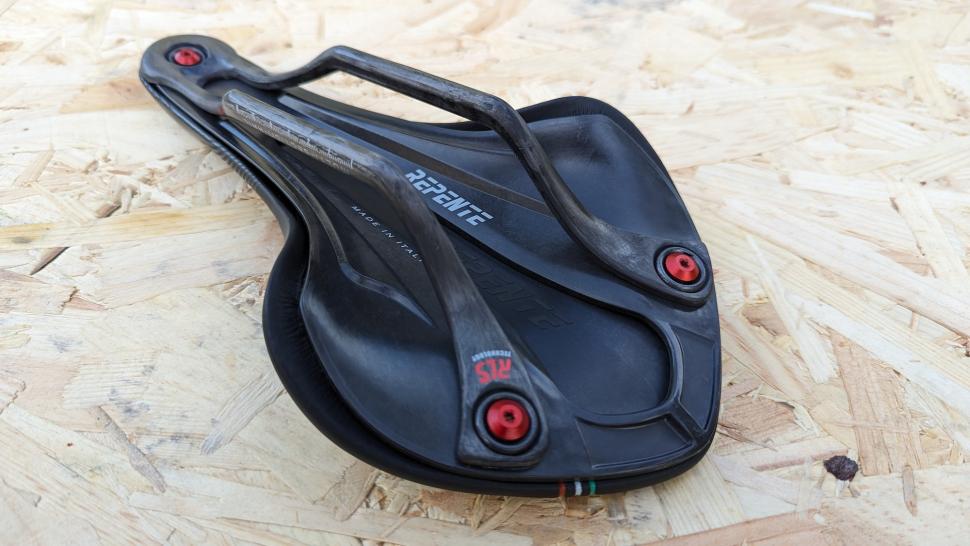









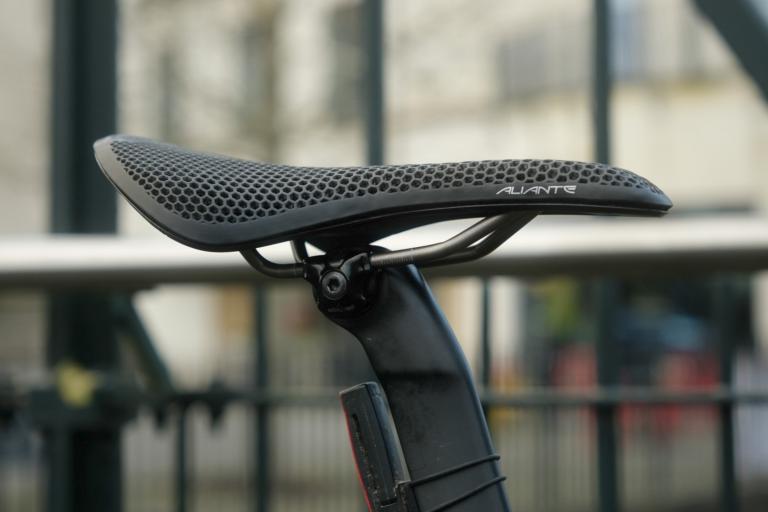

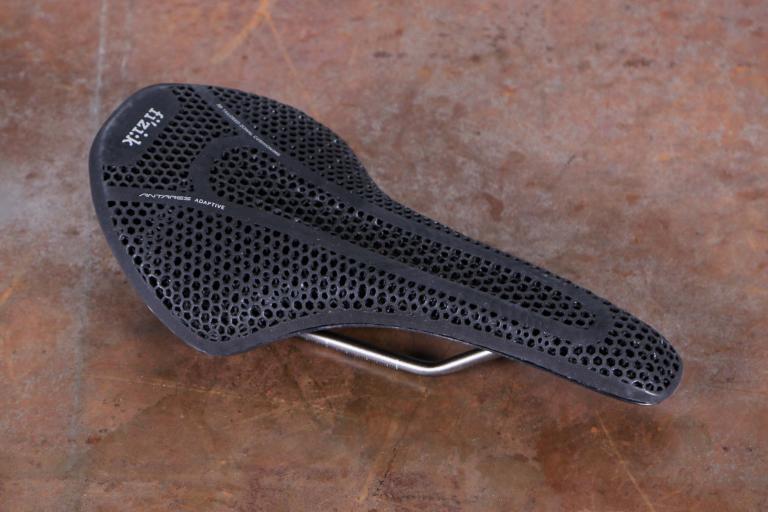

Add new comment
3 comments
Am I missing something obvious? I have no idea what the... (4/4 for mountain biking, 3/4 for road)... means
It's certainly not obvious from the review, but I imagine this relates to Selle Repente's ratings of what the saddle is suitable for (see screengrab from website).
Sorry! Hopefully clearer now.